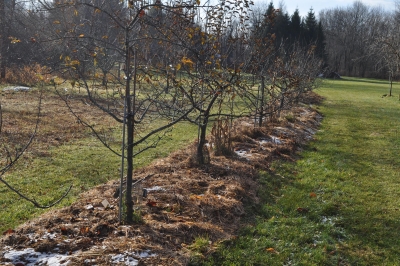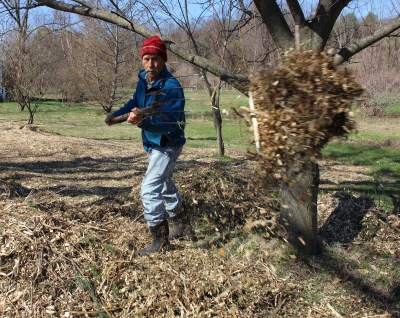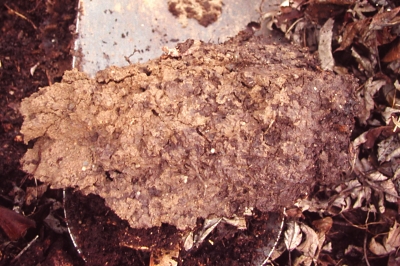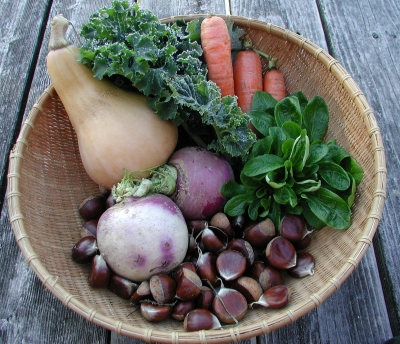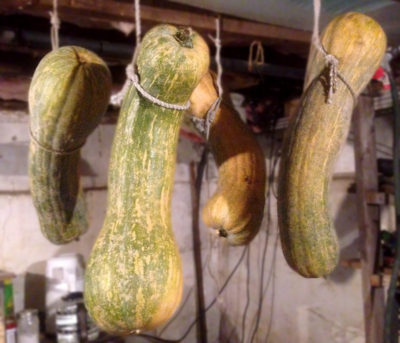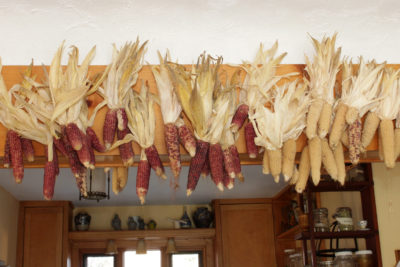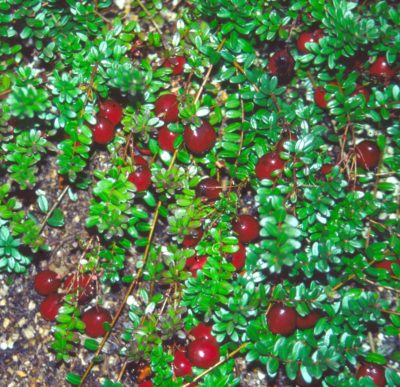ONE OF THANKSGIVING’S UNSUNG HEROES
Years ago I wrote about one of the unsung heroes of Thanksgiving, the groundnut (Apios americanum). This plant, which helped nourish the Pilgrims through their first winters, never achieved the reknown of corn, pumpkins, cranberries, and other foods of the season.
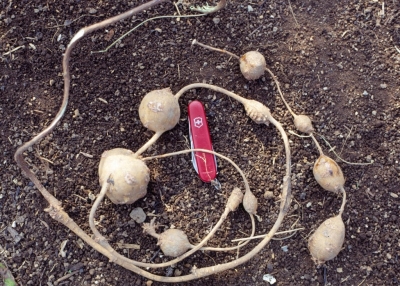
When I first wrote about groundnuts, I had just planted them. I pointed out that there was renewed interest in the plant, though specifics as to how to grow it were wanting and selection of superior clones was just beginning. Now that I have grown groundnut for a few (thirty plus!) years, I am ready to share my experiences.
It Looks Like . . . And Acts Like . . .
As you might guess from the name, the plant makes edible tubers, usually the size of golfballs and strung together on a thinner, ropelike root. The swollen roots on one of my plants are more the size of tennis balls than golf balls. Not as obvious, below ground, at least, is that the plant is a legume; as such, it can “fix” atmospheric nitrogen, that is, put it in a plant-available form.
The plant also has shown some virtues aboveground. Chocolatey brown flowers dangle like jewelry from the twining stems. The flowers are pretty enough to have accorded groundnut a place in flower gardens in France a hundred years ago. On some plants, the flowers also have a strong and delicious aroma – vanilla, instead of chocolate, though.
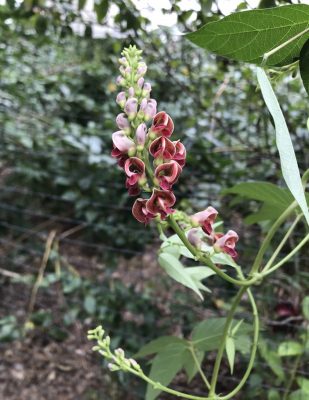
I started some of my plants from seed; others I purchased growing in pots. I trained each vine up and down and around a tomato cage. The plants were and still are in full sun and rich soil, with a thick mulch of wood chips. The ground is so fluffy that I can harvest by just grabbing one end of a root, then pulling it up and out of the soil.
Soon after I planted groundnut, I discovered that it is weedy. I was soon finding plants, first sneaking across the ground a couple of feet from mother plants, and then further and further.
Aboveground, the twining stems reached around and insinuated themselves amongst the branches of a nearby bush cherries and other plants.
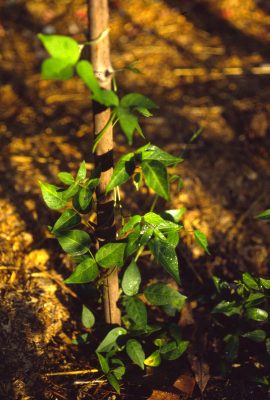
To further unsettle me, I was startled at the reappearance, with vigor, of one young plant which I thought I had destroyed as I dug looking for edible roots. (I since learned that harvest must be delayed until the second season.) I hope groundnut will not prove to be as unruly and as hard to remove as the horseradish I once foolishly planted in the garden!
Is It Good To Eat?
Now for the important question: What does groundnut taste like? Thomas Hariot, in A briefe and true report of the new found land of Virginia (1590) may have been the first to write of groundnut, and his opinion was “boiled or sodden they are very good meate.” In 1602, a correspondent from New England wrote to Sir Walter Raleigh that groundnuts were “as good as potatoes.”
Dr. E. Lewis Sturtevant (Sturtevant’s Notes on Edible Plants, 1919) reported an eighteenth century horticulturalist writing that the “Swedes ate them for want of bread, and that in 1749 some of the English ate them instead of potatoes.” He also quotes a nineteenth century writer, who wrote that the Pilgrims “were enforced to live on ground nuts.”
Moving up to the twentieth century, wild food forager Euell Gibbons, who enjoyed everything from cattails to milkweed pods, was reserved in his praise of groundnuts.
I have harvested groundnuts and, because they should not be consumed raw, boiled some and baked some. They taste almost as good as potatoes, though less distinctive. The texture was dry and mealy. Like Euell, I am reserved in my praise of the roots, though other groundnut plants might have better or worse roots. (After all, not all potatoes taste the same.)
I do think that groundnut, even in its present primitive state, is a native, perennial, permaculture friendly vegetable (I have been accused by some of being a permaculturalist) good enough to deserve a place at the Thanksgiving table. That is, it deserves a place in the garden and on the Thanksgiving table as long as it’s planted where its growth and spread can be reined in.
How about calling it one of its Indian names – nu nu, perhaps – and making nu nu stuffing standard Thanksgiving fare? Happy Thanksgiving!

